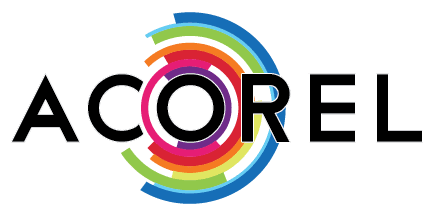
Royal Swinkels Family Brewers optimizes customer experience with SAP
How do you ensure that you always reach customers or consumers via the right channel and with the right message? According to Royal Swinkels Family Brewers, among other things, by converting ‘gut feelings’ into insights that are based on data. Together with SAP, implementation partner Acorel and Deloitte, Swinkels created a 360-degree view of the customer.
Swinkels is best known in the Netherlands for Bavaria, the beer brand that started it all in 1719. However, the ambition is to be able to offer a suitable beer for every moment. To this end, the family business invested heavily in expanding its portfolio. Among others, Brouwerij Palm, Brouwerij Rodenbach, Brouwerij de Molen, Uiltje Brewing Company and wholesaler Bier&CO were taken over. The Ethiopian market was conquered with the beer brand Habesha, originating from the eponymous brewery in Ethiopia in which the company from Lieshout has a majority interest.
Intelligent Brewery
This means that Swinkels’ eight breweries must be able to produce exactly the right amount at the right time. That is not possible based on assumptions. For example, decisions in production must be based on data.
Multichannel approach
The steps that Mouthaan and his team are taking in the field of digital marketing and e-commerce are part of the Intelligent Brewery program. “We have been successful in the traditional retail and hospitality channels for over three hundred years. But consumer behavior is changing. Beer is increasingly ordered online. If you want to be available and orderable everywhere, you also have to invest in the online channels.”
“We therefore adopt a multi-channel approach, particularly in our core markets of the Netherlands, Belgium, United Kingdom, France and Italy,” continues Swinkels’ Head of Digital Marketing & E-Commerce. “These channels are not separate from each other, but form an integrated chain. Many consumers consider online promotions and make their shopping list online, in order to do their shopping in the physical world after all. So,those worlds must be connected to each other.”
‘Alignment’ is a word that Mouthaan uses more often. According to him, it is crucial for a successful multichannel approach. “For example, the price we ask online should not conflict with the price in the other channels. The product presentation must also be tailored to the channel. And you need to make sure you always send the right message to the right person at the right time. Whether that is a catering entrepreneur or online consumer. For example, it makes little sense to communicate with a La Trappe fan about Bavaria. The message has to be really relevant.”
Platforms, people and processes
“If we want to be able to communicate as specifically as possible, the data we have of the customer or consumer must be as complete as possible,” says Mouthaan. In recent years, Swinkels has already invested in the platforms needed for smart data collection. For example, the company uses SAP Cloud for Customer (C4C) for the route-to-market to customers such as retailers and catering entrepreneurs.
However, to collect the right data, it is also important that the knowledge of the platforms is available and that the processes are clear. According to Mouthaan, a lot of improvements can still be made. Visits to catering entrepreneurs and measurements, for example, were not registered in a structured way, or in various ways. “If you don’t know which customers are already selling Cornet but not yet the 0.0 variant, you cannot define targeted actions. By standardizing processes such as recording measurements, you ensure that the data you need for defining actions is in SAP C4C.”
The data in C4C is then forwarded to SAP Marketing Cloud (MC). Mouthaan: “SAP MC is our central customer and consumer database in which the marketing areas are defined so that everyone is in the right ‘basket’. This ensures that we can, for example, send very targeted e-mails. For example, we can tailor e-mails or advertising campaigns to catering entrepreneurs who have shown an interest in specific Cornet. That also makes it easier for account managers to grow the business.”
More consumer data
Another challenge Mouthaan faced was the limited availability of consumer data. “We were too dependent on data from third parties such as Facebook and Google for consumer marketing. But for targeted and relevant communication it is important that you know the consumer well and that you have the data yourself. That means that you know where the consumer does his shopping.”
“We have invested a lot in collecting consumer data. For the consumer there should always be an incentive to get in touch with one of our brands and leave data. The next step is to move towards an omnicontact strategy, approaching customers and consumers in multiple ways. This can be via email, via our portal or perhaps physically on the street.”
Full integration
“SAP implementation partner Acorel and Deloitte showed us how we can get more value from our platforms with the right processes and people,” concludes Mouthaan. “For us, it is a journey that we are taking step by step.” An example of a next step is the connection of SAP Commerce Cloud to SAP C4C, so that transaction data ends up with the right profiles. A link with SAP Service Cloud is also planned. “The ultimate goal is a full integration of all contacts we have with customers and consumers in one system.”
“We are far from where we need to be, but I think we have already achieved a lot”, concludes Mouthaan. “We have quite a number of consumer profiles, which has allowed us to move from ‘instincts’ to insights and based on those insights, we can define actions that will add additional revenue to the business. There is also now a change within the company that data-driven marketing is essential for success in hospitality, retail and online.”

